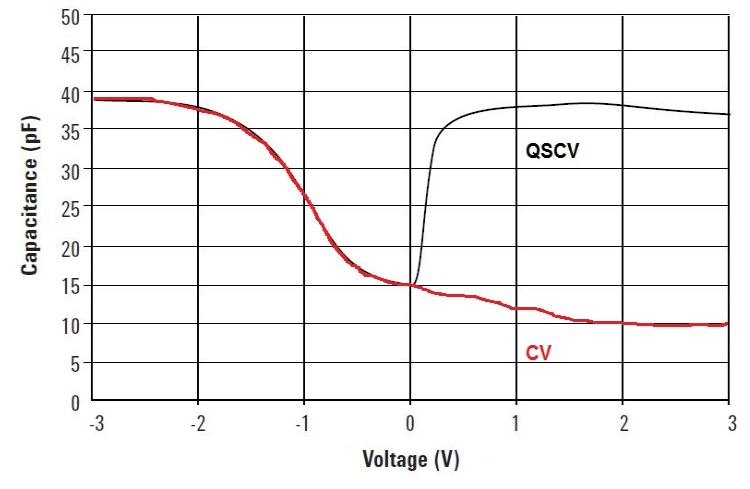CV vs. QSCV
 Before talking about the differences between CV (Capacitance-Voltage) and QSCV
(Quasi-Static Capacitance Voltage) we need to understand what they are.
Before talking about the differences between CV (Capacitance-Voltage) and QSCV
(Quasi-Static Capacitance Voltage) we need to understand what they are.
CV or L/H CV (Low or High Frequency CV) are AC capacitance-voltage measurements. They are
taken using 'balanced bridge' techniques in an AC environment.
Simply put, the equipment varies the input across the bridge in an effort to
achieve balance.
QSCV is a DC based measurement or near DC as the term quasi-static implies.
There are two notable methods: Linear Voltage Ramp which has been around for
years, and Step Voltage which is a newer method targeted toward devices with
secondary leakage other than the actual trap.
So why use one over the other? It gets down to just using the right tool
for the job. As mentioned above, CV uses a LF or HF frequency across a bridge.
Devices/structures with surfaces interface issues (traps) would respond too
slowly for traditional CV techniques to capture the actual capacitance. In addition, a secondary
measurement would be needed to obtain the measurement leakage current.
QSCV, being DC, allows for the actual CV values to be captured. Looking at
the CV trace below you see a measurement sweeping from -3V to 3V with the
capacitance value dropping from 38pF to 10pF. One should question why
their capacitance measurement would be so different at -3V and 3V.
More on the topic to come...
Agilent 4156C QSCV Setup
-
Pseudo-Code for the
Agilent 4156C and similar Parameter Analyzers.
